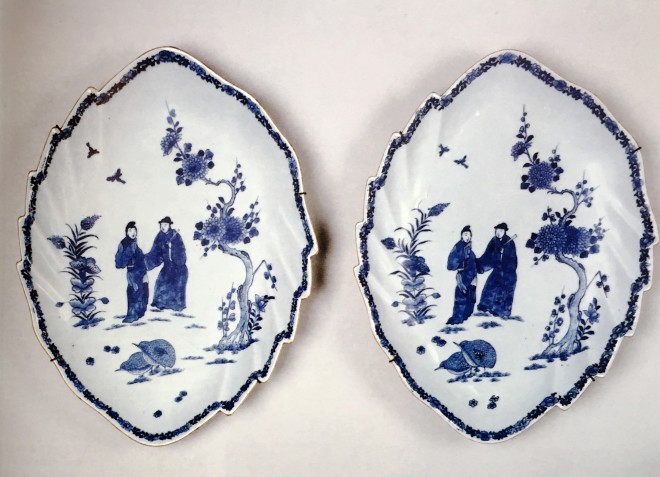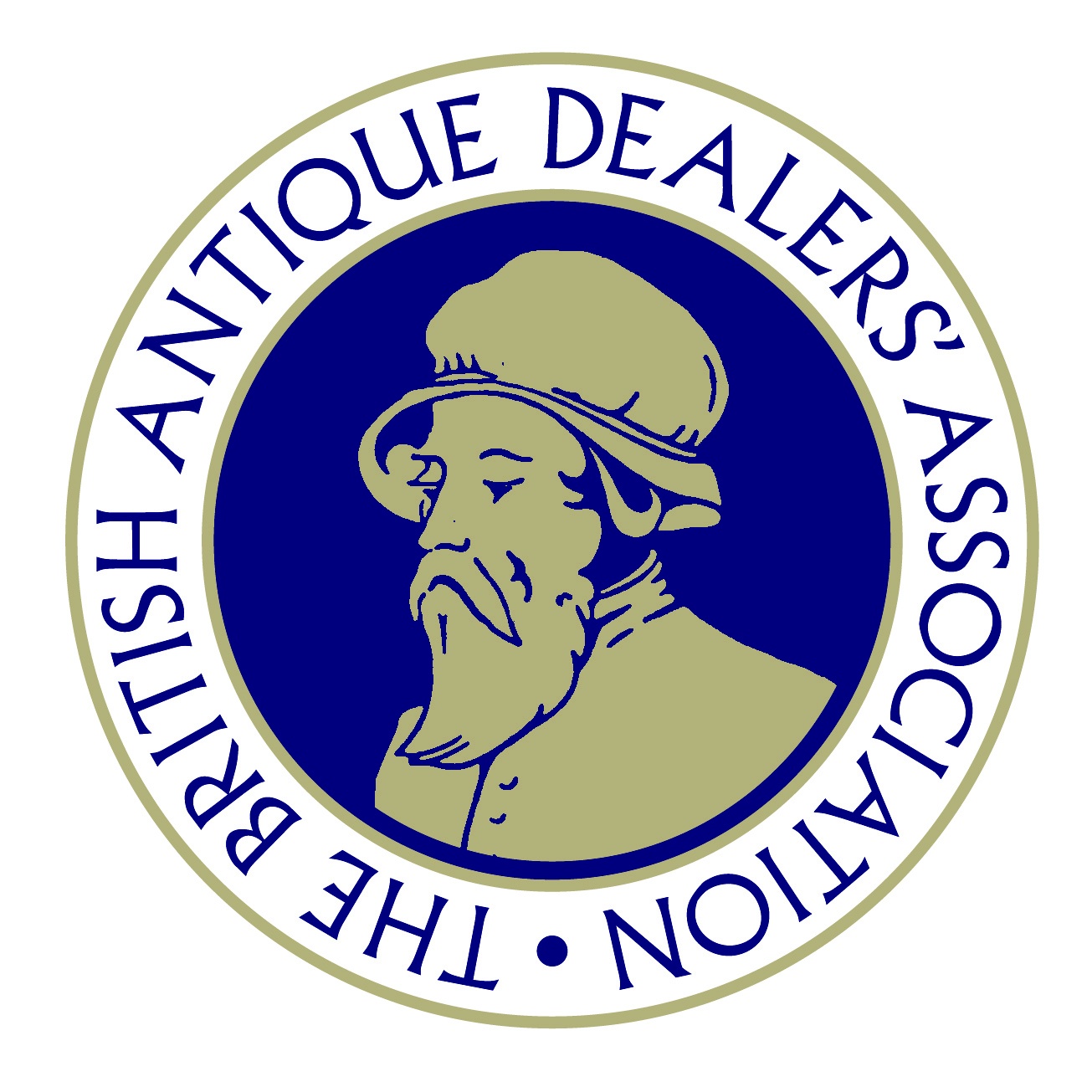Of serrated leaf form, painted with a young man and woman standing beneath a strange hybrid prunus tree with chrysanthemums flowering in its branches, a pair of quail in the foreground and a tall fanciful leafing plant to the left. All within a narrow band of debased karakusa scroll and stylized flowers following the brown-edged rim.
Literature
For a discussion of the decoration, see Anita Gray, A Catalogue of Oriental Ceramics and Works of Art, (cat. 3). The decoration and the form of these dishes demonstrates the curious and often intriguing ancestry to be found on a number of Chinese, Japanese and European porcelains at this date. Here is, in effect, a triple-echo: the figures, clearly intended to represent Chinese, are decidedly European in interpretation; in other words - this pair, painted by a Chinese draughtsman at Jingdezhen, is based on European Chinoiserie. The somewhat stiff and cajoling posture of the man points towards the type of work found on bow porcelain of the 1750s and 60s; the so-called 'Golfer and caddy' being a germane example. The pair of quails are identical in attitude to the popular Bow Kakiemon 'Double quail' pattern of about 1755. The tree too, a typical piece of European misinterpretation, is not dissimilar from that of the aforementioned Bow type, as indeed is the border pattern. Although leaf-shaped dishes are found in several European porcelains, this combination of design elements are found together only on Bow porcelain. This, then, is one example of the complex interchange between East and West during the 18th century.

